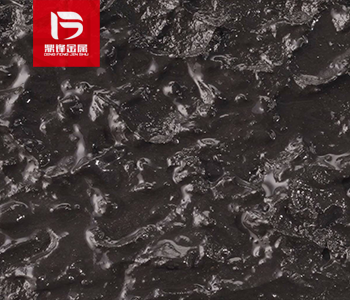
Palladium Anode Mud Recycling
Palladium anode mud is a composite material derived from palladium and other alloying elements, primarily used in electrochemistry. It is valued for its excellent electrical conductivity, corrosion resistance, and stability, making it versatile in various industrial applications.
- Parameter
- Related Questions and Answers
-
Name : Palladium Anode Mud
-
Use : Electroplating,Refining,
-
Application Areas : electrochemical
-
Appearance and properties : Powder or nano-sized particles
-
Settlement Method : On-site payment
-
Recycling Type : Palladium recycling
-
Door-to-door recycling:worldwide
-
Customer service: Free content testing and door-to-door recycling
Palladium Mud Recycling
Palladium mud is mainly composed of palladium element, usually containing small amounts of other metals and impurities. Palladium is a typical precious metal with the chemical symbol Pd and atomic number 46. It has a high melting point (1554°C) and boiling point (2963°C), good electrical conductivity and corrosion resistance, and is an important industrial catalyst. Palladium mud refers to sediment or solid residue with a high palladium content, usually in the form of gray or black mud. Palladium anode mud is one of the sources of palladium-containing waste recycling. Other sources of palladium-containing waste recycling include palladium water recovery, palladium paste recovery, palladium silver paste recovery, palladium graphite recovery, palladium slag recovery, palladium asbestos recovery, etc.
Search : Palladium Mud RecyclingPalladium Sulfate Recycling
Palladium sulfate is a reddish brown palladium catalyst mainly used in electroplating and catalyst fields, as well as analytical reagents. Palladium sulfate has good catalytic activity and is generally used as a reagent, such as a debenzylation reagent. It is also a raw material for synthesizing and producing various palladium containing compounds and catalysts. A compound synthesized with palladium sulfate.
Search : Palladium Sulfate RecyclingPalladium Nitrate Recycling
Palladium(II) nitrate is a kind of palladium catalyst with yellow brown powder appearance, also known as palladium nitrite or Palladium(II) nitrate. Palladium(II) nitrate is mainly used as a catalyst, commonly used as laboratory analytical reagent, oxidant, and separation of chlorine and iodine. As a raw material, it can produce various palladium compounds and palladium catalysts. Palladium(II) nitrate is also widely used as the bath solution for brewing palladium plating, as well as as the intermediate system catalyst or coupling catalyst in the pharmaceutical industry.
Search : Palladium Nitrate RecyclingPalladium Catalysts Recycling
A palladium catalyst is a chemical catalyst that uses palladium (Pd) as its active component, typically supported on materials such as alumina, activated carbon, silica, or zeolite. It is widely used in various industries due to its excellent catalytic properties.Recycling methods include acid leaching, solvent extraction, high-temperature smelting, and electrolysis, which allow for the recovery and refining of palladium to a purity of 99.95% or higher.
Search : Palladium Catalysts RecyclingProduct Details
Palladium anode mud is a composite material derived from palladium and other alloying elements, primarily used in electrochemistry. It is valued for its excellent electrical conductivity, corrosion resistance, and stability, making it versatile in various industrial applications.
Production Process:
Production Methods: The material is typically produced using powder metallurgy and mechanical alloying, involving high-temperature sintering, melting, and grinding to form fine particles.
Properties: The fine particles enhance surface area and reaction activity, crucial for its electrochemical applications.
Applications:
Electrorefining: As the anode material in electrolysis tanks, it facilitates the oxidation of metal ions, aiding in the extraction of high-purity metals like copper.
Electroplating: Used in processes such as brushing and cleaning, it helps in depositing or removing thin metal layers on materials.
Versatility and Uses: Beyond electrorefining and electroplating, palladium anode mud is used in industries like battery manufacturing and corrosion protection. Its stability and durability contribute to its reliability in various electrochemical processes.
Recycling and Environmental Impact: Palladium anode mud can be recovered from waste palladium oxide scrap, promoting recycling and reducing e-waste. Its production involves careful alloying processes to maintain its properties, ensuring its effectiveness in industrial applications.
Palladium anode mud is a critical material in electrochemistry, supporting processes across multiple industries while emphasizing the importance of recycling for sustainability.If you have recycled palladium scrap that needs to be recovered, welcome to contact our services for palladium scrap recovery, palladium processing, and other related services.

